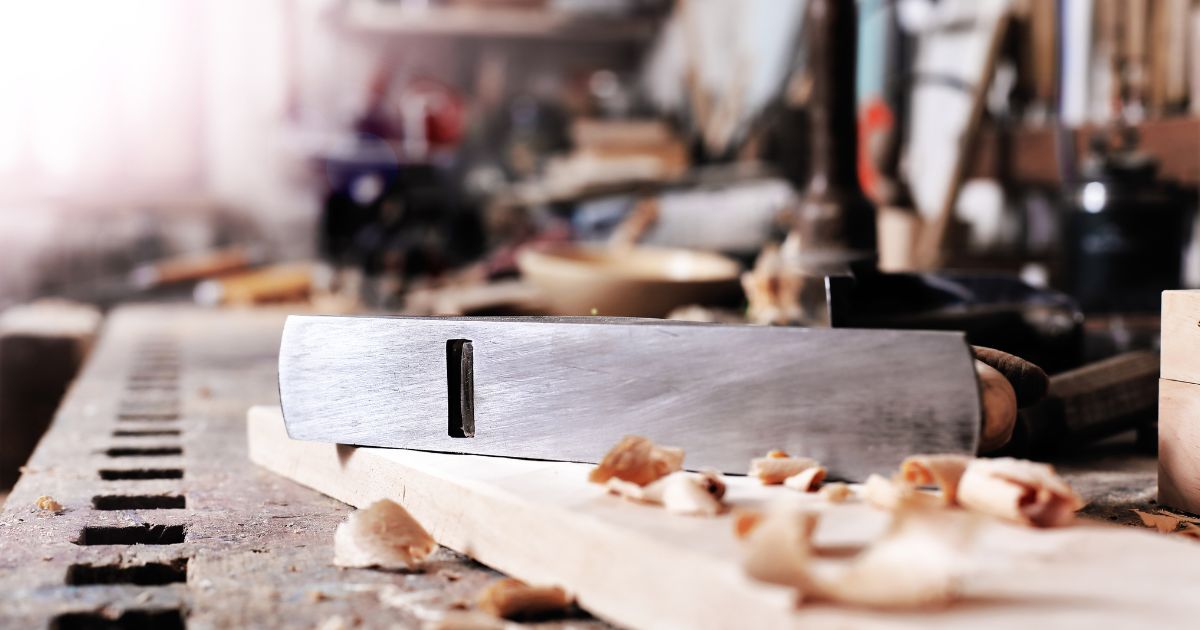Woodworking is a craft that blends creativity with precision. Whether you’re a seasoned woodworker or just starting, having the right tools is crucial to bring your woodworking projects to life. In this comprehensive guide, we’ll explore the top 8 must-have woodworking tools every woodworker needs. These essential tools, both hand and power, form the backbone of any woodworking workshop and are vital for achieving quality results.
Essential Hand Tools
In the world of woodworking, hand tools are timeless classics that offer precision and control. Let’s delve into the must-have hand tools every woodworker should have in their arsenal.
Chisels
Chisels are the unsung heroes of woodworking. They come in various shapes and sizes, each serving a specific purpose. From carving intricate designs to cleaning up joints, chisels are indispensable. Invest in a quality set that includes different widths and styles to cover a wide range of tasks.
Hand Planes
Hand planes are essential for smoothing rough surfaces, flattening edges, and achieving a glass-like finish. Whether you’re restoring an antique piece or crafting a new masterpiece, a good hand plane is invaluable. Consider a bench plane for larger surfaces and a block plane for smaller, more intricate work.
Measuring and Marking Tools
Precision is the key to successful woodworking, and that’s where measuring and marking tools shine. Here are some must-have items:
- Tape Measure: A reliable tape measure ensures accurate measurements every time. Look for one with both metric and imperial scales for versatility.
- Combination Square: Ideal for checking angles and ensuring your work is square. It’s a versatile tool that can serve as a square, level, and depth gauge.
- Marking Knife: A marking knife offers superior precision when marking out joinery or making fine cuts. Its sharp point helps create precise lines that guide your work.
- Marking Gauge: This tool is excellent for marking consistent depths, ensuring your joints fit perfectly.
By having these essential hand tools in your collection, you’ll be well-prepared for a wide range of woodworking projects. In the next section, we’ll explore the world of power tools and their role in woodworking.
Essential Power Tools
While hand tools offer precision and craftsmanship, power tools bring efficiency and speed to your woodworking projects. Here are some must-have power tools every woodworker should consider:
Circular Saw
A circular saw is a versatile cutting tool that should be in every woodworker’s workshop. It’s perfect for making straight cuts in various materials, including wood, plywood, and MDF. Circular saws come in corded and cordless models, and the latter offers greater mobility, making it a convenient choice for on-site work. When selecting a circular saw, look for features like adjustable depth settings and laser guides for improved accuracy.
Router
A router is an essential tool for shaping wood and creating decorative edges. It can hollow out areas or cut intricate patterns, making it invaluable for cabinetry, molding, and decorative work. Routers come in both handheld and table-mounted models. Handheld routers are more versatile, while table-mounted routers provide stability and precision for specific tasks. Consider your woodworking needs when choosing the right type.
Table Saw
A table saw is the workhorse of the woodworking shop, capable of making precise rip cuts, crosscuts, and bevel cuts. It’s essential for cutting large sheets of plywood and dimensioning lumber. Safety is paramount when using a table saw, so ensure you have proper safety features and accessories like a riving knife, blade guard, and push sticks. A well-built table saw is an investment that pays off with accurate and efficient cutting.
Cordless Drill
A cordless drill is a versatile power tool that finds use in a wide range of tasks, from drilling holes to driving screws. Look for a cordless drill with adjustable speed settings and a comfortable grip. Investing in a drill with a lithium-ion battery ensures longer runtime and faster charging, keeping your woodworking projects on track.
By adding these power tools to your workshop, you’ll have the capability to tackle a broader range of projects efficiently. Now, let’s explore the importance of safety gear and accessories in woodworking.
Safety Gear and Accessories
Safety should always be a top priority in woodworking. The right safety gear and accessories not only protect you but also enhance your overall woodworking experience.
Safety Goggles and Ear Protection
Protecting your eyes and ears is non-negotiable in woodworking. Safety goggles shield your eyes from flying debris, while ear protection guards against the constant noise generated by power tools. Always wear ANSI-certified safety goggles and comfortable ear protection to safeguard your health.
Dust Collection System
Woodworking generates a considerable amount of sawdust and debris. A dust collection system helps maintain a clean and healthy workspace by efficiently removing dust and particles from the air. It also extends the life of your tools by keeping them free from dust buildup. A combination of a dust collector and a shop vacuum can significantly improve air quality in your workshop.
Woodworking Apron and Gloves
An apron with pockets and sturdy gloves are not just for style but also for protection. An apron keeps essential tools close at hand, saving time and effort when working on a project. Additionally, it offers some protection from sharp objects and wood chips. Durable gloves provide extra grip and reduce the risk of splinters and minor injuries.
Safety gear and accessories are investments that pay off in the long run by keeping you safe, comfortable, and productive in your woodworking endeavors.
Woodworking Workbench
A solid workbench is the heart of any woodworking shop. It provides a stable platform for your projects and holds your tools within easy reach. Let’s explore the key considerations when it comes to woodworking workbenches.
Choosing the Right Workbench
The ideal workbench should be sturdy, flat, and able to withstand heavy use. Consider the following factors when choosing or building a workbench:
- Material: Workbenches are commonly made from hardwood, plywood, or a combination of materials. Hardwood is preferred for its durability, while plywood offers affordability.
- Size: Choose a workbench size that suits your available space and the scale of your projects. A larger workbench provides more workspace but may not be suitable for smaller workshops.
- Vices and Clamps: A workbench with built-in vices and clamps provides added versatility, allowing you to secure your workpieces firmly.
- Mobility: Some workbenches come with wheels, which can be helpful if you need to move your workspace or use the bench for different tasks.
- Height: Ensure the workbench height is comfortable for you, as you’ll spend long hours working at it.
Workbench Accessories
To maximize the functionality of your workbench, consider adding accessories such as:
- Bench Dogs: Bench dogs are adjustable pegs that hold workpieces in place.
- Tool Well: A tool well is a depression in the workbench surface where you can keep your frequently used tools within reach.
- Storage: Shelves, drawers, and pegboard can help keep your tools organized and easily accessible.
- Vises: If your workbench doesn’t have built-in vises, consider adding them for clamping workpieces securely.
Your workbench is where woodworking magic happens, so take the time to choose or build one that suits your needs and preferences.


